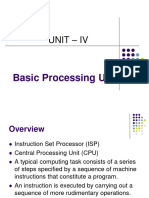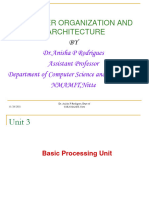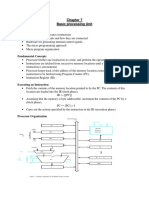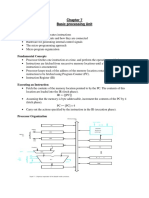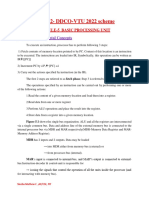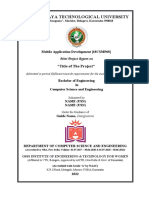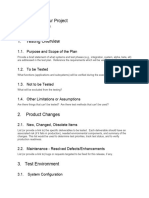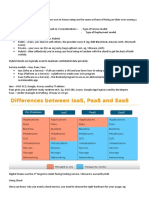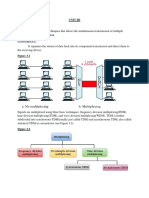0% found this document useful (0 votes)
25 views44 pagesModule-2 Memory
The document outlines the fundamental concepts of a basic processing unit, detailing the instruction execution process, including fetching, decoding, and executing instructions using a Program Counter (PC) and various registers. It describes the organization of the processor, including the use of buses for data transfer, the Arithmetic Logic Unit (ALU) for performing operations, and the control unit for generating control signals. Additionally, it discusses memory operations, including fetching and storing data, and introduces concepts of hardwired and microprogrammed control mechanisms.
Uploaded by
R INI BHANDARICopyright
© © All Rights Reserved
We take content rights seriously. If you suspect this is your content, claim it here.
Available Formats
Download as PPTX, PDF, TXT or read online on Scribd
0% found this document useful (0 votes)
25 views44 pagesModule-2 Memory
The document outlines the fundamental concepts of a basic processing unit, detailing the instruction execution process, including fetching, decoding, and executing instructions using a Program Counter (PC) and various registers. It describes the organization of the processor, including the use of buses for data transfer, the Arithmetic Logic Unit (ALU) for performing operations, and the control unit for generating control signals. Additionally, it discusses memory operations, including fetching and storing data, and introduces concepts of hardwired and microprogrammed control mechanisms.
Uploaded by
R INI BHANDARICopyright
© © All Rights Reserved
We take content rights seriously. If you suspect this is your content, claim it here.
Available Formats
Download as PPTX, PDF, TXT or read online on Scribd
/ 44















